A Boeing jet bound for India was forced to turn back to get its fuel control switches checked as investigations into the Air India tragedy continue.
Etihad Airways flight EY352, travelling from Abu Dhabi to Hyderabad made its return to the UAE capital after an engineering work order came into place on Sunday mid-flight, according to Times of India.
The order to inspect the locking mechanism on fuel supply switches came after a report by India’s Aircraft Investigation Bureau was published on Saturday.
The Boeing 787-9 plane departed Abu Dhabi at 10pm local time before it was diverted back, data from flight tracking site FlightAware shows.
The flight was one and a half hours into the nearly four-hour journey to Rajiv Gandhi International airport when it was diverted.
MailOnline has approached Etihad Airways for comment.
It comes as the preliminary Air India report found that fuel switches for the engines of the doomed plane, which crashed last month in Ahmedabad, had almost simultaneously flipped just seconds after takeoff.
This meant that the Boeing 787 Dreamliner began to lose thrust and sink down moments after setting of to London from the Indian city on June 12.
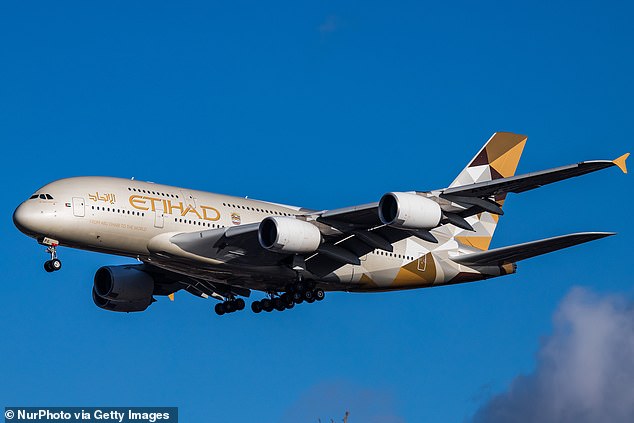
Etihad Airways flight EY352, travelling from Abu Dhabi to Hyderabad was forced to turn back after an engineering work order came into place on Sunday mid-flight
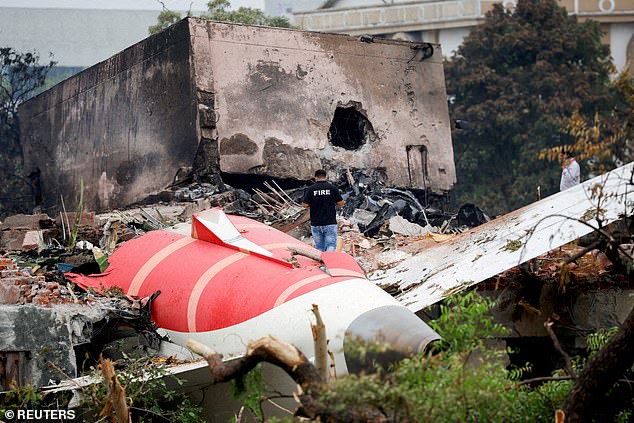
The diversion comes after a report into the Air India tragedy found that fuel switches for the engines of the doomed plane. FILE PHOTO: A firefighter stands next to the crashed Air India Boeing 787-8 Dreamliner in Ahmedabad on June 13
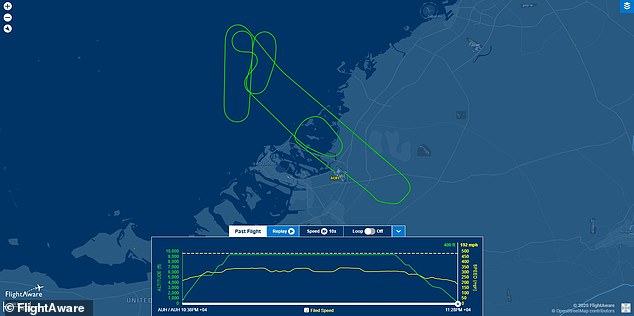
Data on flight tracking website FlightAware shows that the flight turned around midway through the journey
India’s Directorate General of Civil Aviation has since ordered airlines to inspect the fuel switches on certain aircraft, including Boeing 787s and 737s, following the fatal crash that killed 260 people.
In the flight’s final moments, one pilot was heard on the cockpit voice recorder asking the other why he cut off the fuel.
‘The other pilot responded that he did not do so,’ the report by India’s Aircraft Accident Investigation Bureau (AAIB) said.
It did not identify which remarks were made by the flight’s captain and which by the first officer, nor which pilot immediately transmitted the distress call: ‘Thrust not achieved… falling… Mayday! Mayday! Mayday!’
Seconds later the jet began losing height and exploded into a fireball after smashing into a hostel on the ground in Gujarat, claiming the lives of all but one passenger on board and 19 people on the ground.
Investigators’ early assessments indicate no apparent fault with the Boeing or its engines, suggesting that Boeing and engine maker GE had no apparent responsibility for the accident.
But the report does not say how the switch – which is used to start or shut down the engines and are typically left on during flight – could have flipped to the cutoff position.
‘Did they move on their own or did they move because of the pilots?’ he asked. “And if they were moved because of a pilot, why?’
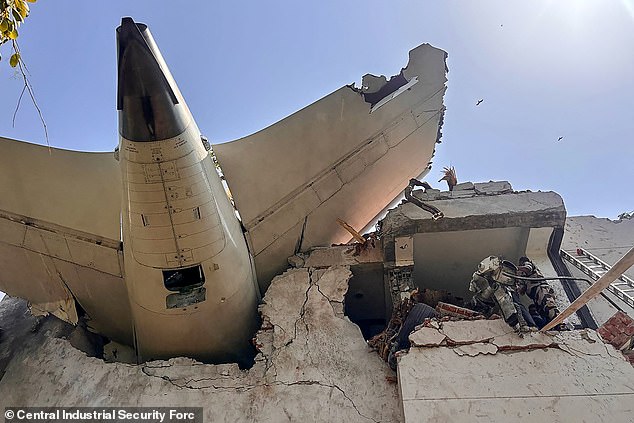
India’s Directorate General of Civil Aviation has since ordered airlines to inspect the fuel switches on certain aircraft. Image shows the tailpiece of the doomed Air India flight after it crashed in a residential area near the airport in Ahmedabad on June 12
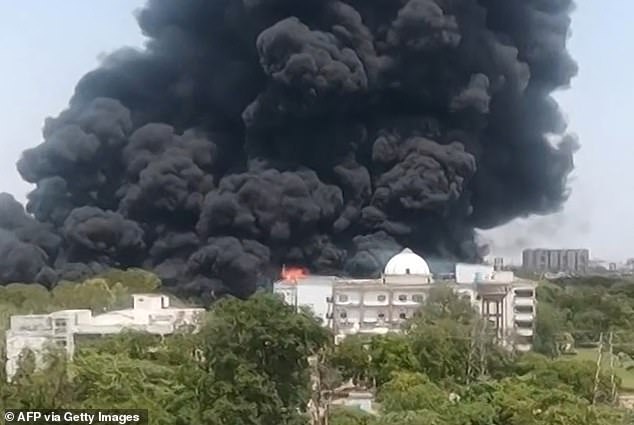
This screengrab from UGC video footage shows thick black smoke billowing from a residential area after Air India flight AI171 crashed in Ahmedabad on June 12, 2025
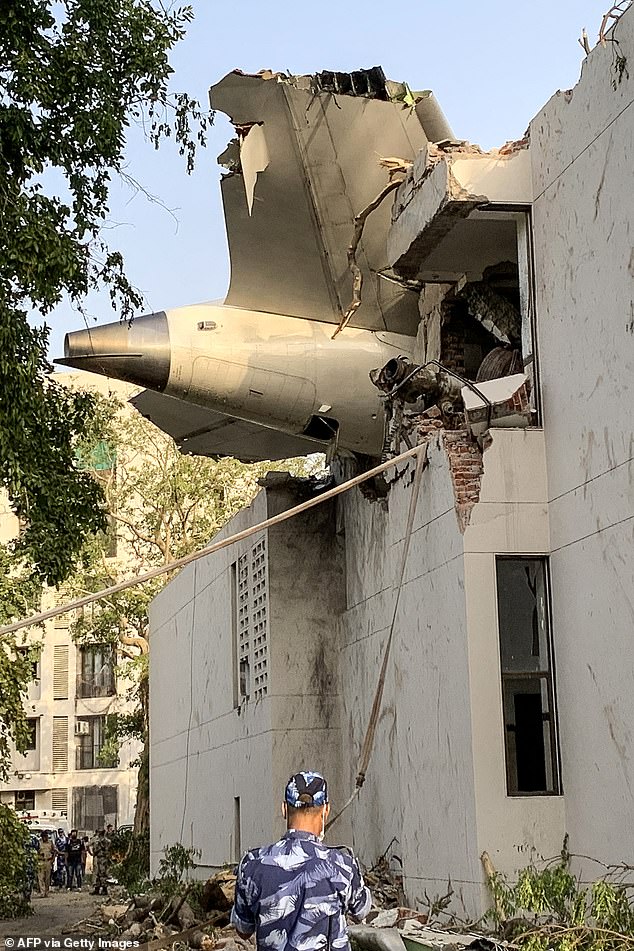
The back of Air India flight 171 is pictured at the site after it crashed in a residential area near the airport in Ahmedabad on June 12, 2025

Vishwashkumar Ramesh was the only passenger who survived the tragedy
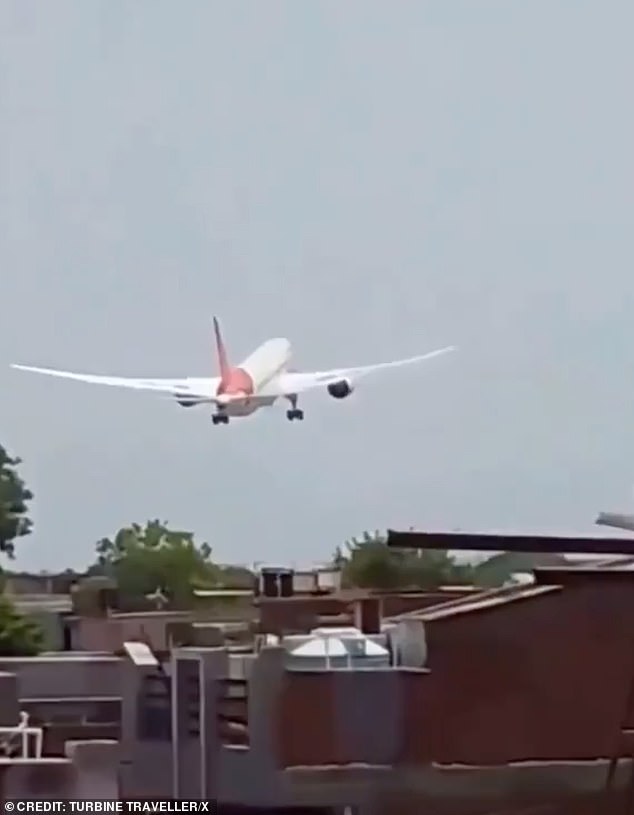
The aircraft crashed into a student hostel near the airport shortly after taking off
The report said the jet was carrying 54,200kg of fuel, which was within the ‘allowable limits’.
‘The aircraft achieved the maximum recorded airspeed of 180 Knots IAS at about 08:08:42 UTC and immediately thereafter, the Engine 1 and Engine 2 fuel cutoff switches transitioned from RUN to CUTOFF position one after another with a time gap of 01 sec,’ the report said.
‘The Engine N1 and N2 began to decrease from their take-off values as the fuel supply to the engines was cut off.
Referring to data recovered from the plane’s two Enhanced Airborne Flight Recorders (EAFR), it continues: ‘As per the EAFR, the Engine 1 fuel cutoff switch transitioned from CUTOFF to RUN at about 08:08:52 UTC. The APU Inlet Door began opening at about 08:08:54 UTC, consistent with the APU Auto Start logic.
Thereafter at 08:08:56 UTC the Engine 2 fuel cutoff switch also transitions from CUTOFF to RUN.
‘When fuel control switches are moved from CUTOFF to RUN while the aircraft is inflight, each engine’s full authority dual engine control (FADEC) automatically manages a relight and thrust recovery sequence of ignition and fuel introduction.’
U.S. aviation safety expert John Cox said a pilot would not be able to accidentally move the fuel switches that feed the engines.
‘You can’t bump them and they move,’ he said.
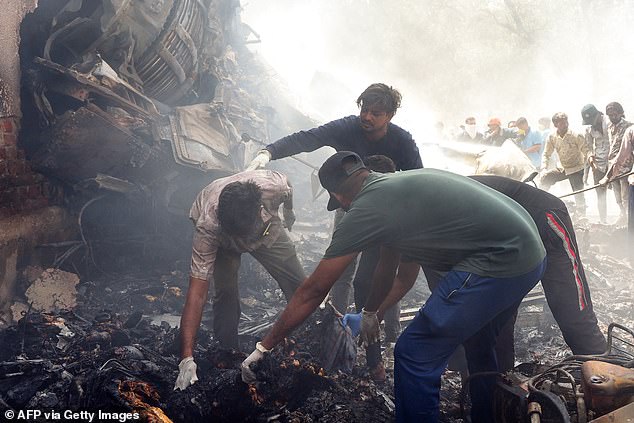
scue officials work at the site where Air India flight 171 crashed in a residential area near the airport in Ahmedabad on June 12
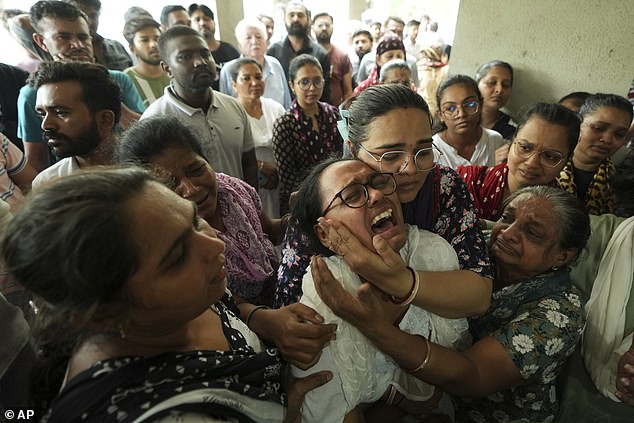
ayushi Lawrence, center, wife of Lawrence Christian, a victim of the June 12 Air India plane crash, grieves during his funeral, in Ahmedabad, India, Sunday, June 22, 2025
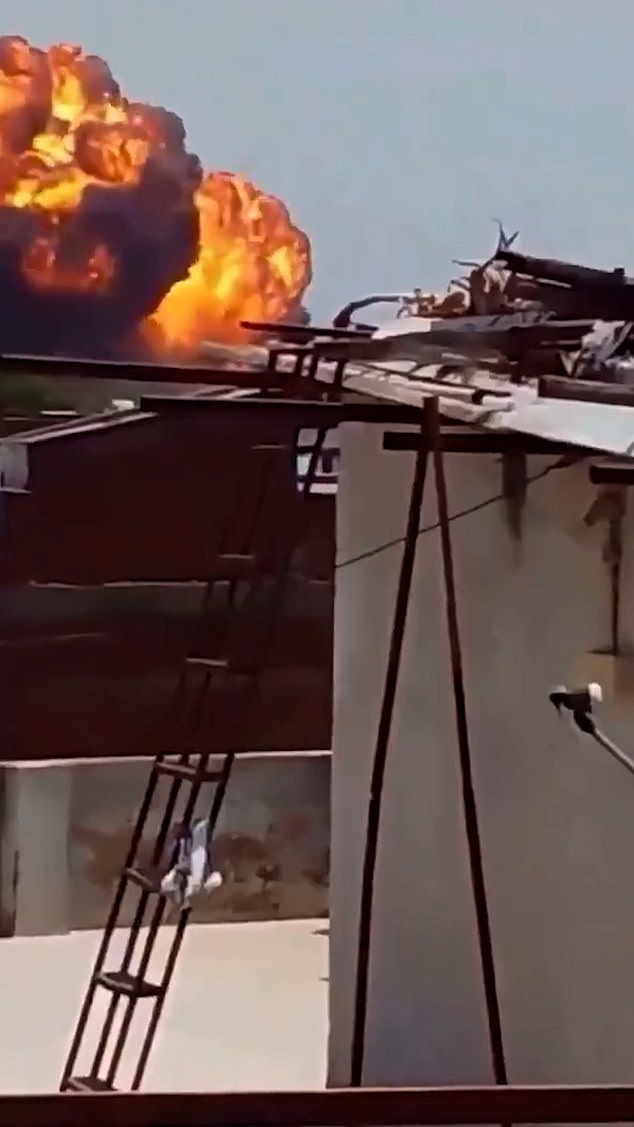
Screen grab shows footage of the Air India plane crash
The new findings appear to tally with theories reportedly put forward on the US side of the investigation, which also noted that the switches that control fuel flow to the aircraft’s twin engines were turned off shortly after takeoff, causing the jet to lose thrust.
It remains unclear why they were turned off, and investigators have been left wondering whether it was deliberate, accidental or corrected too late.
Earlier this week, it was revealed that investigations into the Air India plane crash are looking into the pilots’ medical records as it is claimed one of them had depression and mental health issues.
Captain Sumeet Sabharwal, an experienced pilot with more than 8,200 hours in the cockpit, was piloting the Boeing 787 Dreamliner when it plummeted.
Captain Mohan Ranganathan, a leading aviation safety expert in India, has revealed that ‘several’ Air India pilots had allegedly confirmed that the well-experienced pilot had suffered from poor mental health.
Speaking to The Daily Telegraph, he claimed: ‘He had taken time off from flying in the last three to four years. He had taken medical leave for that.
Captain Sabharwal is also understood to have taken bereavement leave after the death of his mother, though it is believed by Mr Ranganathan that he had been ‘medically cleared’ by Air India prior to the fatal crash last month.
In Powai, Mumbai, one of Captain Sabharwal’s former colleagues described him as a ‘thorough gentlemen’ telling the publication that he believed ‘he was actually considering early retirement in the next couple of years’, with plans to look after his elderly father, aged 90.
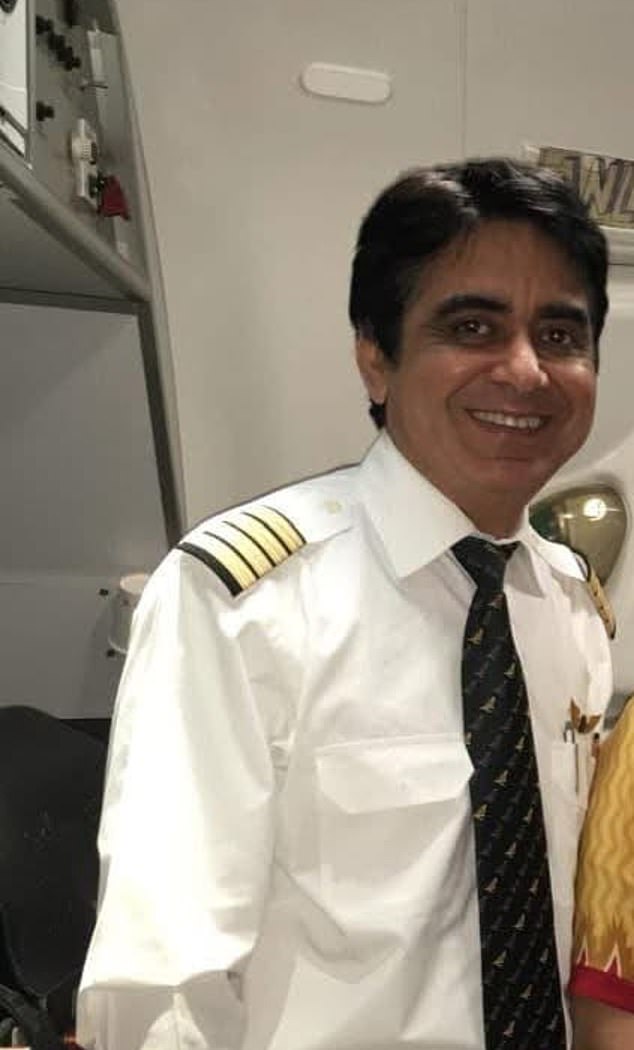
Investigations into the Air India plane crash are reportedly examining Captain Sumeet Sabharwal’s (pictured) medical records amid allegations that he had depression and mental health issues
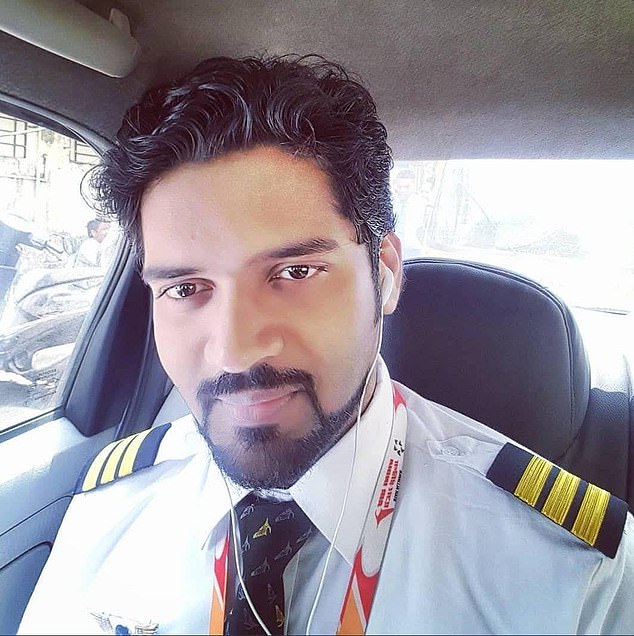
Captain Sumeet Sabharwal was piloting the Boeing 787 Dreamliner with co-pilot Clive Kunder (pictured) when it plummeted into a residential area killing 241 people on board and claiming 19 more lives of those on the ground
In his short career, co-pilot Clive Kunder, 28, had logged more than 3,400 hours.
The Telegraph said that while Air India declined to comment, an official working with their parent company, Tata Group, told the publication that Captain Sabharwal had not taken any medical leave, with the preliminary report failing to obtain any significant findings.
They added that within the last two years, both pilots onboard the flight had passed the Class I medical exam, which makes an evaluation of their psycho-physical capabilities.












